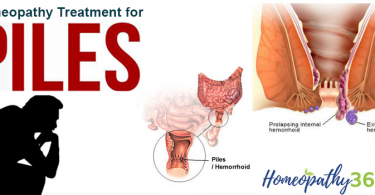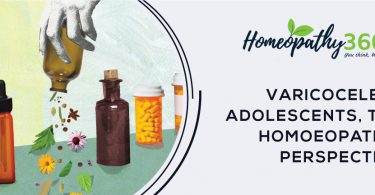Abstract
Medicinal plants form the major source for many of the drugs. The medicinal value of a plant depends upon the nature of the chemical constituents present in the plant. The phytoconstituents which have the pharmacological and biological properties. So, the therapeutic effect of chemical constituents is called active principle. This article includes different types of phytoconstituents in Homoeopathic medicinal plants and their therapeutics uses. Method used for this study including the various literature and journals about phytoconstituents which are reviewed. This Study helps the Homoeopathic physician to understand the physiological action of drugs and its some therapeutic uses. The phytochemicals are natural bioactive compounds that work with nutrients and dietary fiber to protect against diseases. They can have complimentary and over lacking mechanism of action in the body, including antioxidant effect antibacterial and antiviral actions, modulation of detoxification enzyme, stimulation of the immune system, modulation of hormone metabolism in the body.
Keywords: Phytoconstituents, Homoeopathic medicinal plants, Therapeutic value.
Introduction
The active principle of a drug is the potent constituents of the drug. That is, individual to the drug which is responsible for the pharmacodynamic action of the drug. The constituents of a plant may be active or inactive. The inactive constituents are structural constituents of cell wall like cellulose, lignin or reserve constituents of plants like starch, sugars and proteins. The active constituents are secondary metabolites like alkaloids, glycosides, oils, resins, tannins etc. The plant constituents depend upon the species of the plant, their habitat, the height, the soil on which they grow, the seasonal variations. Also, a variation in the composition of these constituents in the different parts of the plant. Hence, in cultivation attention is paid to the selection of proper seeds, type of soil, optimum climacteric factors like light, temperature, elevation, rainfall, and plant growth factors. These constituents reach a peak level in certain parts at a certain time. Therefore, the parts used for the preparation of the medicine and the time and mode of collection of medicinal plants are specified in the pharmacopoeia.
The types of chemical constituents in Homoeopathic medicinal plants.
Glycosides
a) Glycosides are organic compounds which upon hydrolysis give rise to one or more sugars and non-sugar compound.
b) The non – sugar component is called as aglycone.
c)Glycosides are crystalline or amorphous solid substance. They are soluble in water and alcohol, but insoluble in ether and chloroform.
d)Glycosides perform important functions in plant growth, regulation, protection etc.
e) Therapeutically glycosides are important due to aglycone content, they exhibit various types of physiological actions.
- Methyl salicylate from gaultheria, which is analgesic.
- Anthraquinone derivatives in senna, aloe is used as laxative.
- Strophanthin in strophanthus, digitoxin in digitalis are cardio-tonic.
d)The name of all glycosides ends in “in”.
Eg: Aloe – aloin
- Ruta graveolens – rutin
- Thuja occidentalis – thujin, thujetin, thujenin
- Cinchona – quinovin
Carbohydrates
a) Carbohydrates are the primary products of photosynthesis.
b) They are the structural or skeletal substance of plants.
c)Carbohydrates are classified into two according to the number of sugar units present in the molecules.
- Simple carbohydrates
- Compound carbohydrates
d)Fundamental unit of plant is made of a polysaccharide, cellulose.
Saponins
a) Saponins are plant glycosides.
b) They are highly complex glycosides with their detergent properties, which are highly distributed in the plants.
c)The saponins are insoluble in water, but soluble in weak alcohol.
d)They have the property of causing hemolysis of red corpuscles even at great dilution.
e) Saponins in plants
- Calendula officinalis: Calendula -Saponin
- Cyclamen: Cyclamin
- Digitalis: Digitonin
Tannins
a) Tannins constitute a large group of, complex organic, non – nitrogenous, phenolic compounds of high molecular weight.
b) Tannins are non- crystallizable, soluble in water and alcohol.
c)When they applied on the smooth muscle, they cause their contraction. So called astringent effect.
Different types
1) Hydrolysable tannins: These may be hydrolyzed by acids or enzymes such as tannase.
Eg: Rheum, Hamamelis, Eucalyptus
2)Condensed tannins: Their molecules are more resistant to breakage than hydrolysable tannins.
Eg: Cocca, Areca, Cinnamon
3) Pseudo tannins: Compounds of lower molecular weight than true tannins.
Eg: Nux Vomica, Ipecacuanha
Resins
a) Resins are plant exudates are formed in schizo-genous or schizolysigenous ducts or cavities.
b) Resins are heavier than water, they are usually amorphous, hard and brittle solids, some are slightly soft semisolids When heated soften melt and form clear adhesive fluids.
c) If the resins are produced as normal product of metabolism of plant, which are called physiological resins.
Eg: Copaiva
d)As a result of injury, the resins are produced are called pathological resin.
Eg: Tolu balsam
e) Resins occur with volatile oils, the mixture is called as oleoresins
Eg: Copaiva
f) Gum resins consist of gum and resin. eg: Asafoetida
g) Oleo- gum -resins are associated with gum and volatile oil both.
h) Externally resins are used as mild antiseptic in the form of cerates, ointments, and plasters. They are used in the preparation of emulsions.
i)Resin containing drugs possess purgative(podophyllum), sedative (Cannabis), expectorant(copaiva), laxative (Asafoetida), anthelmintic (Asphidium).
Alkaloids
a) Alkaloids are organic nitrogenous substance and are the secondary metabolites of a plant.
b) The term alkaloid derived from “vegetable alkali”
(alk =alkali, oid =like)
c)Alkaloids have been reported in various plants parts, such as in whole aerial plant (lobelia)in leaves, (Belladonna)in bark, (Cinchona, kurchi) in rhizomes and roots (Aconite) in corn (Colchicum)
d)Several alkaloids have been found in cultures of microorganisms.
Eg: bacteria, fungi (Ergot) and algae
e) Alkaloids are successfully used as drugs in the treatment of cardiovascular, nervous, alimentary tract and many other diseases.
f) Some alkaloids are employed in the treatment of malignant neoplasms.
Eg: Cocca-Cocaine
Stramonium-hyoscyamine
Coffea-caffeine
Conium maculatum-coniine
Volatile oils
a) Volatile oils are odorous constituents of plants.
b) They are liquid, lipophile and volatile with a characteristic smell.
c)Volatile oils are present in entire plant or almost any parts of the plant as leaf, bark, seed fruits, wood and sub-terranean parts.
d)Volatile oils are used as flavoring and perfuming agent in pharmaceutical formulations, food beverages and cosmetics.
e) They are also used as medicinal agent such as carminolives, anthelmintics, diuretic, antiseptic, local anesthetic, sedative.
Eg: Pinus species -Turpentine oil
Mentha piperita-Peppermint oil
Eucalyptus globulus-Eucalyptus oil.
Fixed oils, fats and waxes
a) Fixed oils and fats obtained from plants.
b) Fixed oils mostly found in seeds, occurring within the cytoplasm as drops or crystals.
c)They are grouped on the basis of their solubility. They are soluble in ether and chloroform and are insoluble in water.
d)If a substance is liquid at 15.50 to 16.50 temperatureit is called fixed oil and if it is solid or semisolid at the above temperature it is called fats.
e) Nonvolatile so leave a permanent grease spot on paper, with alkalis these form soap and glycerin.
Eg: Prunus Amygdalus-Almond oil
Ricinus communis-Castor oil
Croton tiglium-Croton oil
Olea europaea-Olive oil
Proteins
a) Proteins are essential constituent of protoplasm. They are contain54% carbon,7% hydrogen,16% nitrogen,22% oxygen.
b) The plant proteins are isolated in crystalline form.
c)Proteins are stored in plants in the form of aleurone grains.
d) Proteins are colloidal in nature; they can be crystallized. They are soluble in water, weak in salt solutions, dilute acids and alkalis.
Vitamins
a) Vitamins are formerly known as accessory food factors they are potent organic compounds, which is present in many vegetable foods.
b) Chemically, vitamins vary from very simple compounds to very complex ones.
c)Alfalfa and Spinach contain Vit k, wheat germ oil contains Vit E, orange contain Vit C (Ascorbic acid), Carotene in carrots is precursor to Vit A, Plant sterol, ergosterol in yeast, moulds and fungi is the precursor of Vit D, Thiamine, Riboflavin and Nicotinic acid are present in many fruits and plant cells.
Conclusion
Homoeopathic mother tinctures from different medicinal plants and their constituents are important for health maintenance, it is considered the most affordable treatment used by most of the populations. The phytoconstituents or active principles of drug of medicinal value belong to one of the following group glycosides, alkaloids, tannins, saponins, resins, fixed oils, fats and waxes, volatile oils. These compounds have the therapeutic use such as antioxidants, anticancer, anti-inflammatory, anxiolytic, antispasmodics among other properties. Research shows that some of the Homoeopathic mother tinctures bears all these properties. However, more research is required to explore the phytoconstituents present in the Homoeopathic mother tinctures.
References
1) Gopi KS. Encyclopedia of Medicinal Plants Used in Homeopathy. AIY publications; 2000.
2) Partha MP, Mandal B. A Text Book of Homoeopathic Pharmacy. B. Jain Publishers; 2001.
3) World Health Organization. WHO monographs on selected medicinal plants. World Health Organization; 1999.
4)Sumit G. Art and Science of Homeopathic pharmacy. Homoeopathic Community, 2016:423-43.
5) Pereira MM, Martins AD, Morais LC, Dória J, Cavalcanti VP, Rodrigues FA, Pasqual M, Luz JM. The Potential of Agro-homeopathy Applied to Medicinal Plants-A Review. Journal of Agricultural Science. 2019;11(4):500-6.
Author
Dr. Juby Antony, PG Scholar
Department of Homoeopathic Pharmacy, Father Muller Homoeopathic Medical College and Hospital, Mangalore, Karnataka.
Under the guidance of Dr. Vivek Sakthidharan
Associate Professor, Department of Homoeopathic pharmacy, Father Muller Homoeopathic Medical College and Hospital, Mangalore, Karnataka.





